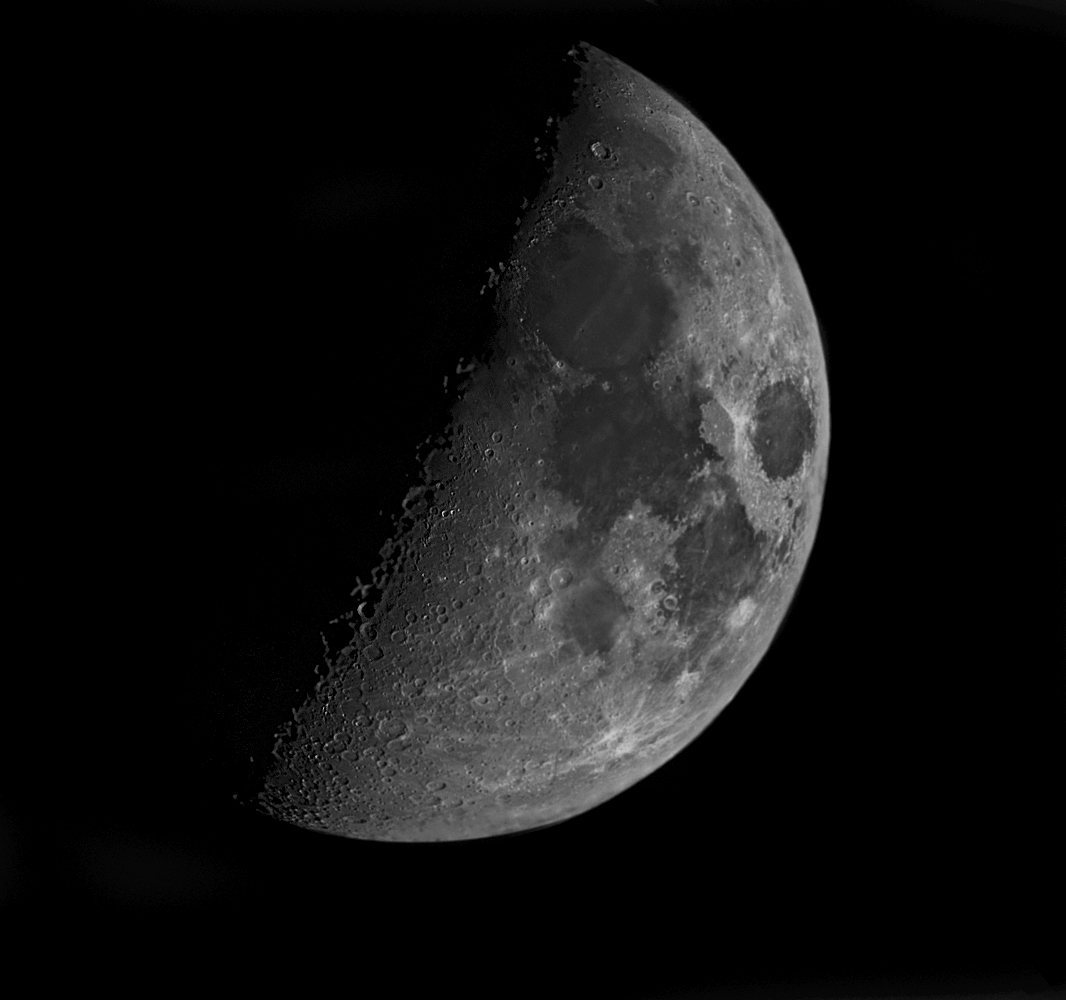[This is just one of many articles in the author’s Astronomy Digest.]
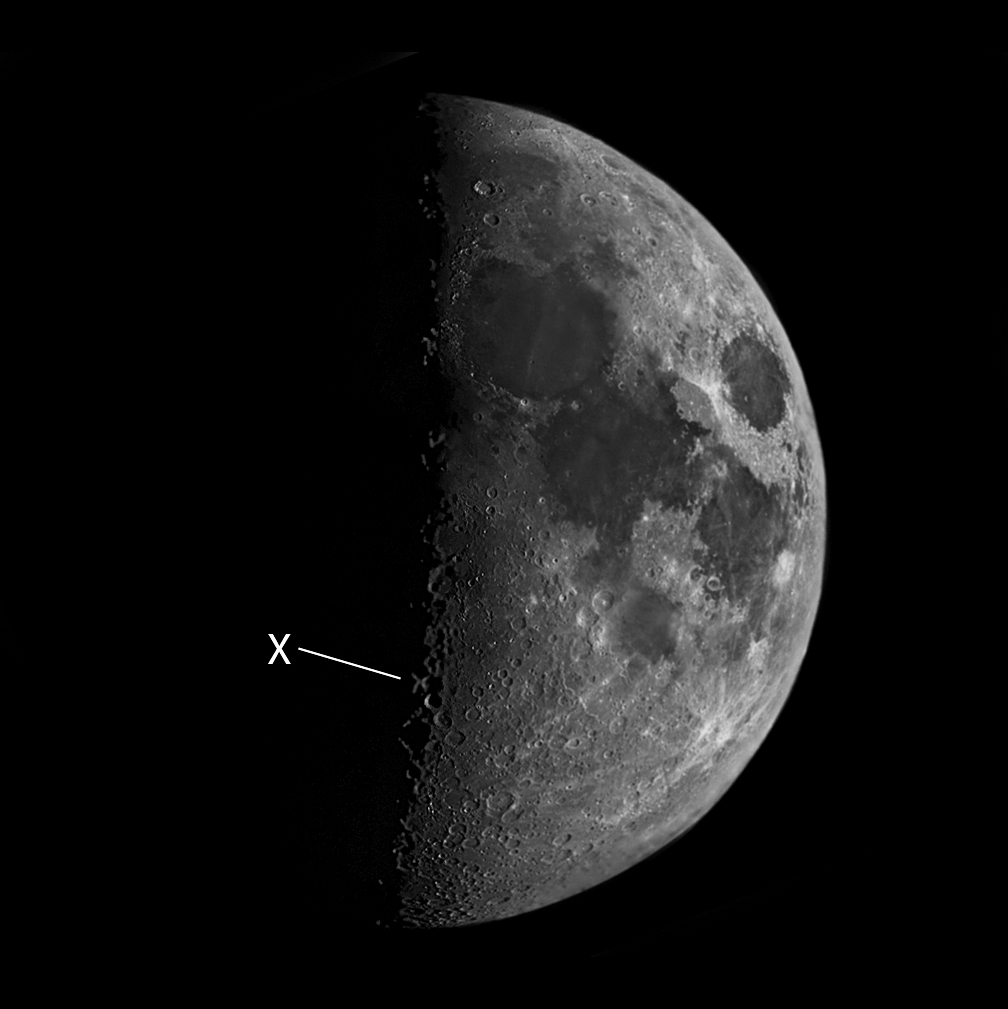
Once each lunation, close to first quarter, it can be possible to spot an interesting feature on the Moon’s surface in the shape of an X. Only visible for a few hours (should the Moon be in the sky) it is the result of the Sun’s rays lighting up parts of the rims of the craters Blanchinus, La Caille and Purbach. It is called a clair-obscure effect. This composite lunar image shows the lunar X at around 5:30 BST on May 11th 2019 when the Moon had an elevation of ~53 degrees. The sky was thus still blue and so the skylight (sampled close to the Moon) had to be subtracted from the captured images.
The images below show the craters in daylight as imaged in the infrared by the author and the same area as shown on the Virtual Moon Atlas program. The X has been highlighted. [The straight Wall is also visible in the author’s image.]
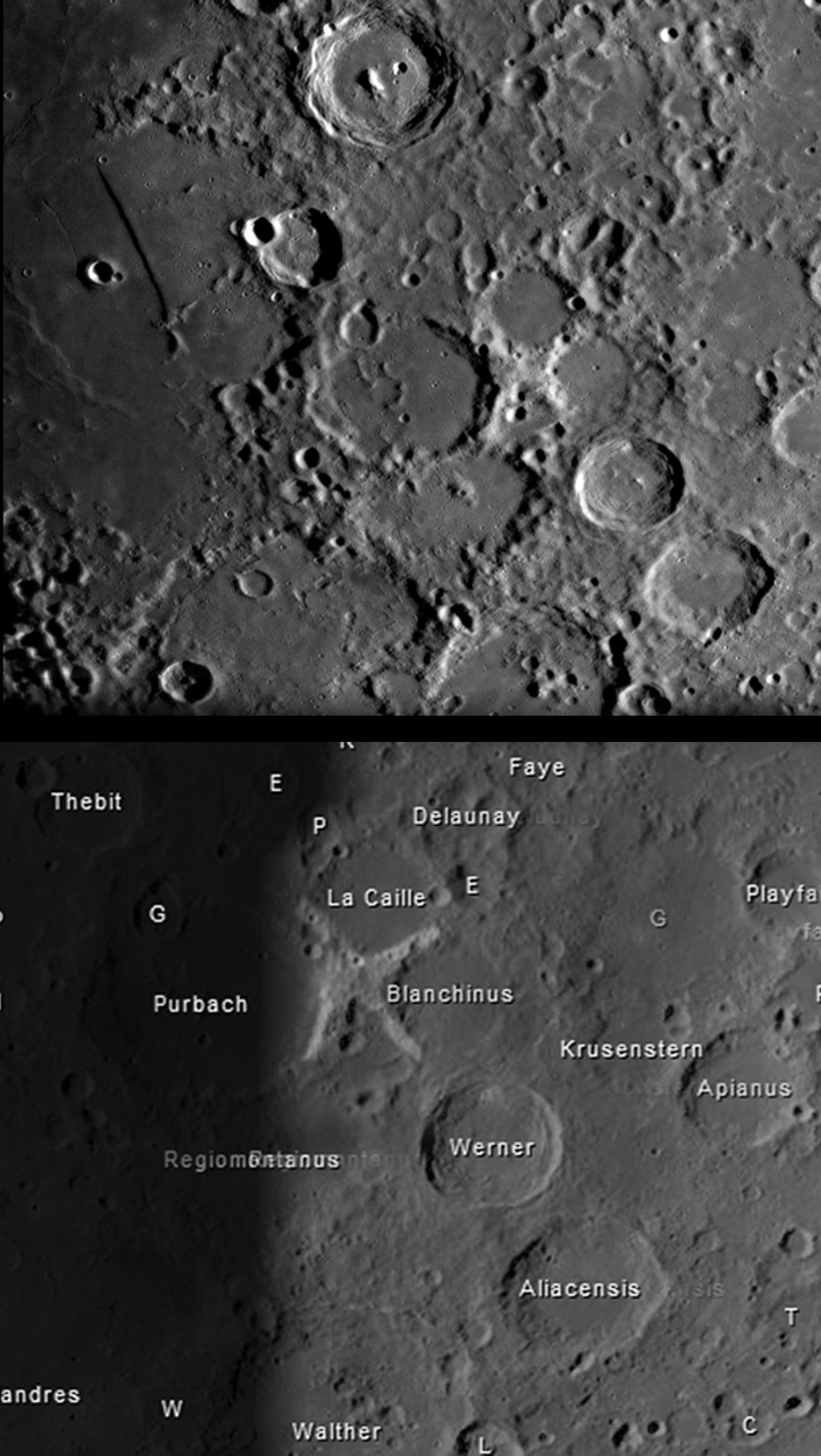
The next times when it might be visible from the UK are around 8 pm BST on July 9th 2019 and around 7 pm GMT on November 4th 2019.
The following images and screen shots shows a simulation showing how one can remove the skylight from a lunar image if taken in daylight.

In Adobe Photoshop or Gimp (see the article ‘Removing Light Pollution in Adobe Photoshop and GIMP’) duplicate the image making a second layer. In the top layer the skylight colour – a deep blue – is sampled close to the Moon and this colour is painted across the whole layer. [This assumes that the skylight is uniform across the whole image. With a reasonably high elevation this should be the case.]

The two layers are then flattened using the ‘Difference’ blending mode.
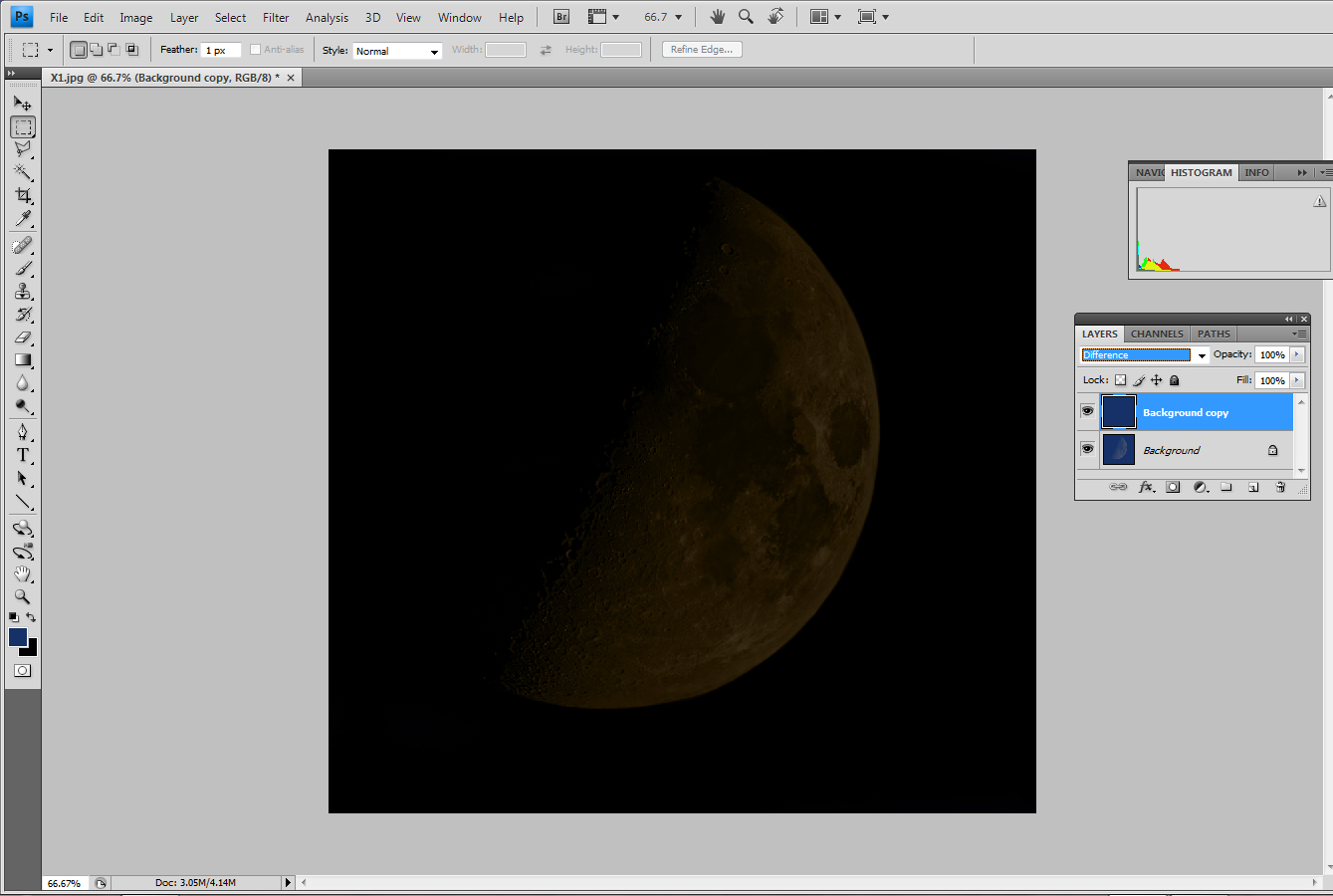
The result had a yellowish tinge due probably to the fact that I had left the camera white balance on ‘Auto’ rather than ‘Daylight’ so the overall blue image had skewed the colour balance. The brightness was increased.
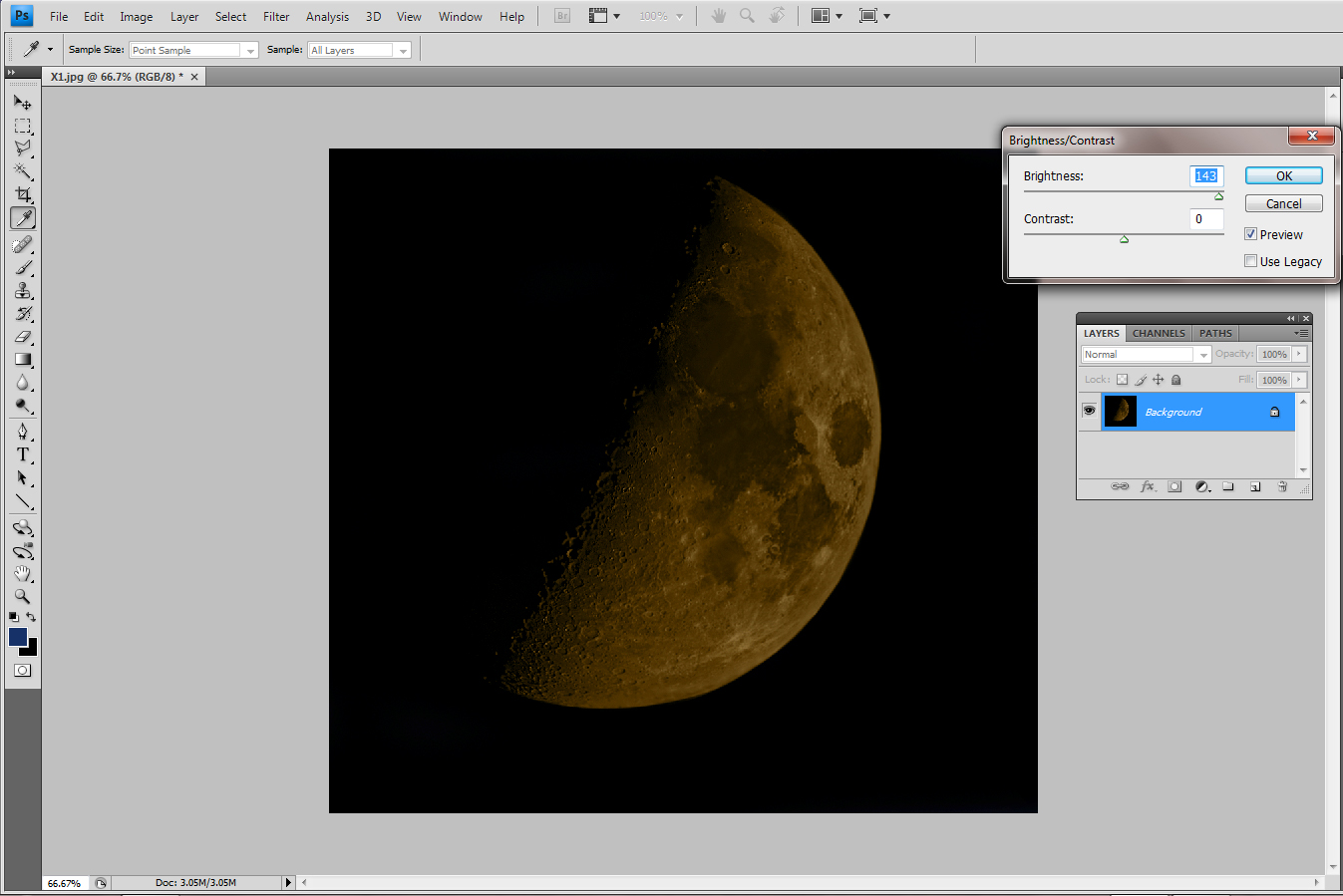
Converting the image to monochrome removes any colour cast.
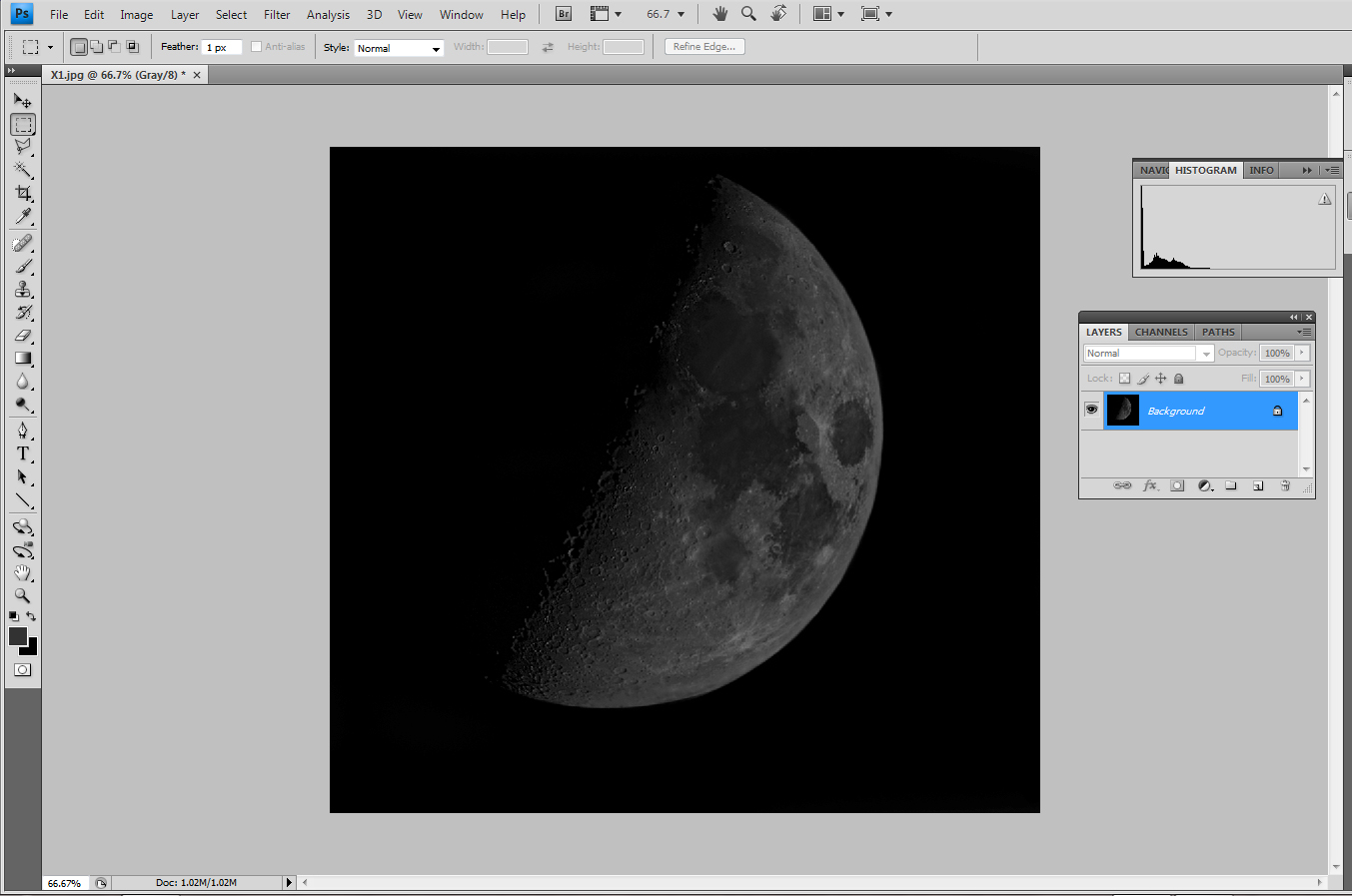
The image is rather faint so the Moon’s brightness was further increased. The image was then enhanced using the ‘Smart Sharpen’ filter.
